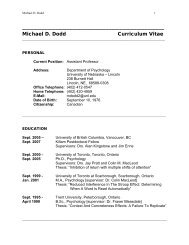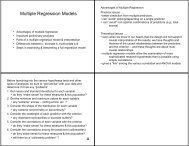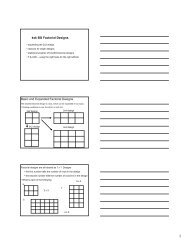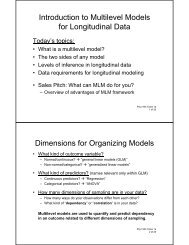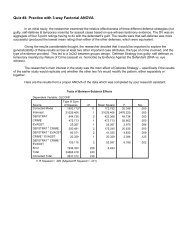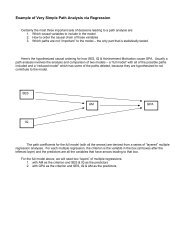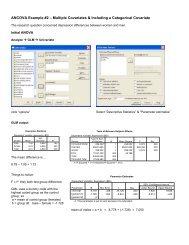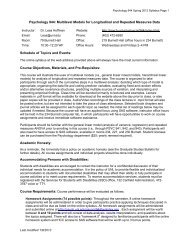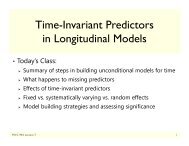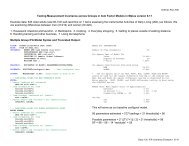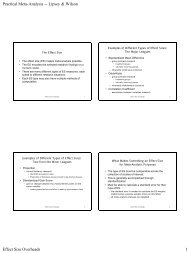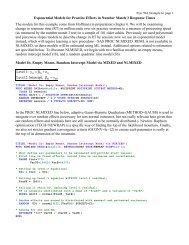Criterion-related Validity “Is the test valid?†Criterion-related Validity ...
Criterion-related Validity “Is the test valid?†Criterion-related Validity ...
Criterion-related Validity “Is the test valid?†Criterion-related Validity ...
- No tags were found...
Create successful ePaper yourself
Turn your PDF publications into a flip-book with our unique Google optimized e-Paper software.
The advantage of criterion-<strong>related</strong> <strong>valid</strong>ity is that it is a relativelysimple statistically based type of <strong>valid</strong>ity!• If <strong>the</strong> <strong>test</strong> has <strong>the</strong> desired correlation with <strong>the</strong> criterion, <strong>the</strong>nyou have sufficient evidence for criterion-<strong>related</strong> <strong>valid</strong>ity.There are, however, some limitations to criterion-<strong>related</strong> <strong>valid</strong>ity…• It is dependent upon your having a criterion•Sometimes you don’t have a criterion variable to use --e.g., first <strong>test</strong> of construct that is developed• It is dependent upon <strong>the</strong> quality of <strong>the</strong> criterion variable•Sometimes <strong>the</strong>re are “limited” or “competing” criteria• “Correlation is not equivalence”•your <strong>test</strong> that is cor<strong>related</strong> with <strong>the</strong> criterion might also becor<strong>related</strong> with several o<strong>the</strong>r variables -- what doesit “measure” ?Conducting a Predictive <strong>Validity</strong> Studyexample -- <strong>test</strong> designed to identify qualified “front deskpersonnel” for a major hotel chain-- 200 applicants - and 20 position openingsConducting <strong>the</strong> “proper study”• give each applicant <strong>the</strong> <strong>test</strong> (and “seal” <strong>the</strong> results)• give each applicants a job working at a front desk• assess work performance after 6 months (<strong>the</strong> criterion)• correlate <strong>the</strong> <strong>test</strong> (predictor) and work performance (criterion)Anybody see why <strong>the</strong> chain might not be willing to apply thisdesign?Here are two designs often substituted for this proper design.Substituting concurrent <strong>valid</strong>ity for predictive <strong>valid</strong>ity• assess work performance of all folks currently doing <strong>the</strong> job• give <strong>the</strong>m each <strong>the</strong> <strong>test</strong>• correlate <strong>the</strong> <strong>test</strong> (predictor) and work performance (criterion)Problems?• Not working with <strong>the</strong> population of interest (applicants)• Range restriction -- work performance and <strong>test</strong> scorevariability are “restricted” by this approach• current hiring practice probably not “random”• good workers “move up” -- poor ones “move out”• Range restriction will artificially lower <strong>the</strong> <strong>valid</strong>ity coefficient (r)



